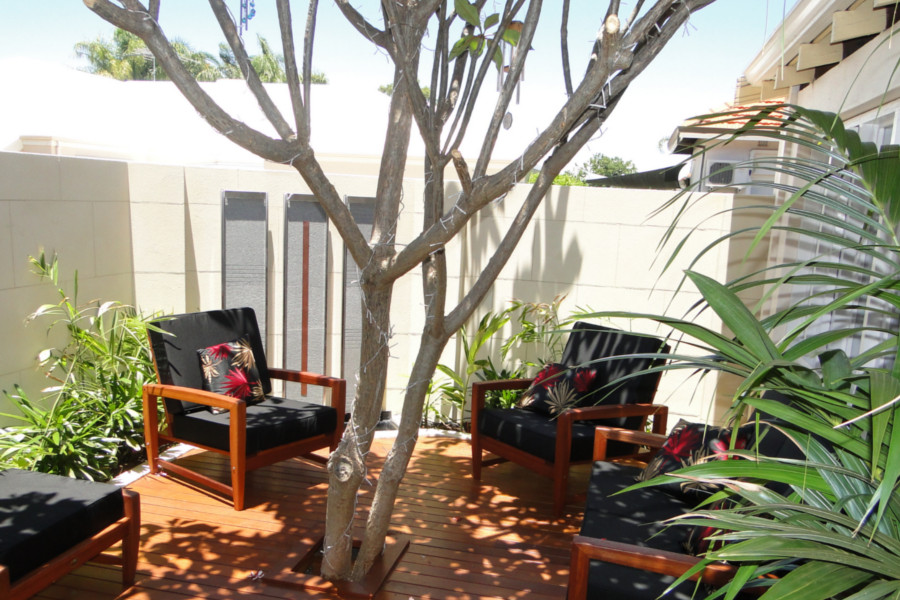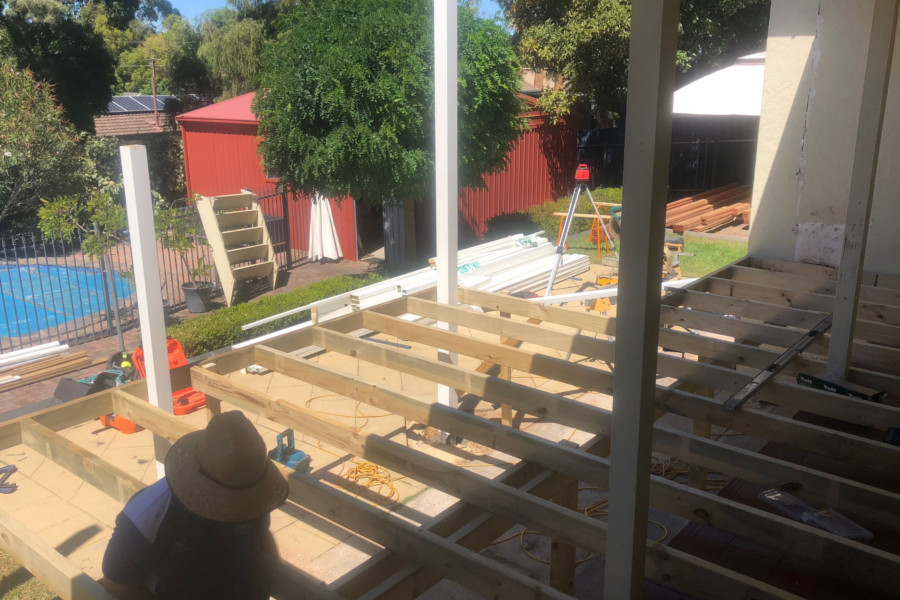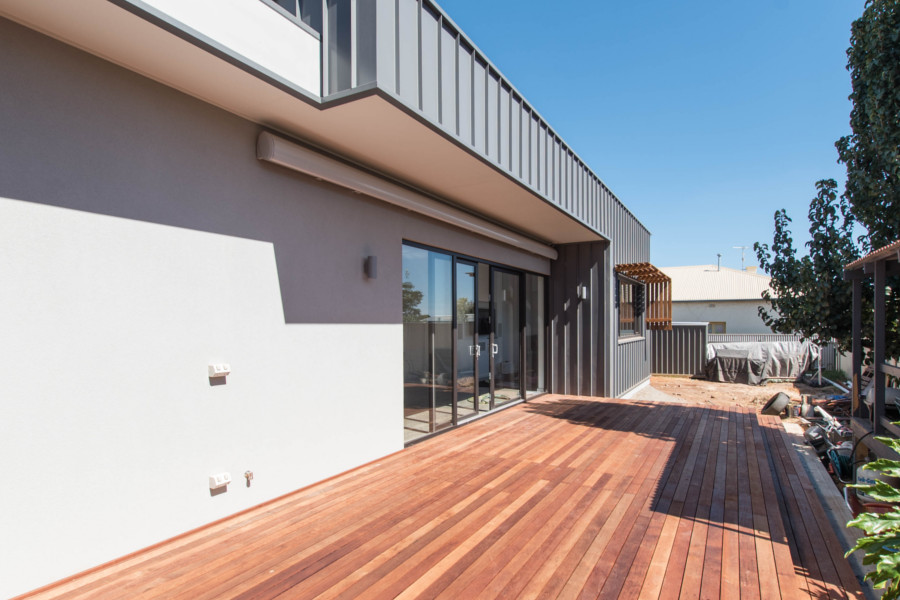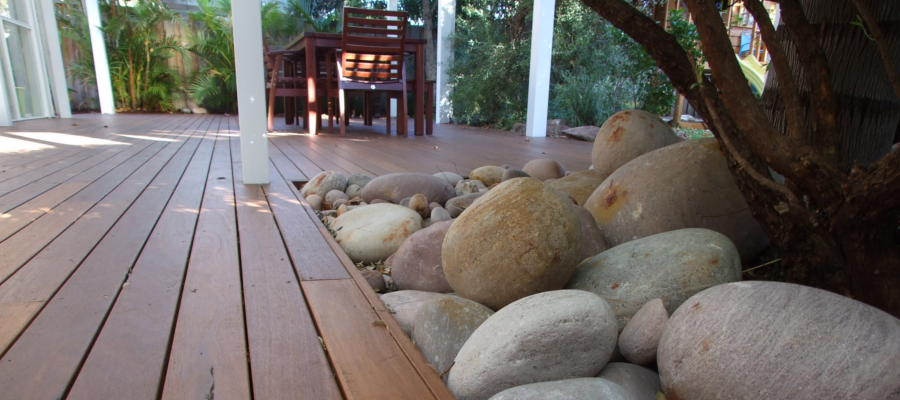
When making a decision about the type of flooring you’d like in your home, you need to decide what characteristics you like in a floor. There are many things to consider. As it’s not the sort of decision that you want to get wrong it’s worth doing a bit of thinking about before you decide upon your choice. I’ve gone through a number of factors to consider below, with a focus on hardwood flooring, and have added some additional hardwood flooring considerations.
The heat retention of your flooring is an important consideration and one that will likely have a great bearing on the choice you make. Hardwood floorboards are roughly in the middle of carpet and tiles/concrete in terms of heat retention. Carpet is the warmest floor covering, and tiles and concrete the coldest. As a natural product, hardwoods retain a decent amount of heat, but are rarely too hot or cold underfoot.
Closely related to this preference is the level of give underfoot you prefer from your flooring. Again you will find that carpet has a large amount of give, and tiles and concrete have minimal give. With hardwood flooring it largely depends on the subfloor, if laid directly onto concrete it’s likely to be relatively rigid and hard, whereas with joists there is likely to be some give. The professionalism of the installation will have a large impact upon the prevalence of any give in your floor
The noise that your flooring product makes, as well as the noise it reflects are also worth considering. Carpet, as you are probably aware is a great concealer of noise, and absorbs sound from the atmosphere. Timber floorboards do reflect noise substantially, but a little less than tiles and concrete. Occasionally a hardwood floor will also make some noise when there is movement either of the boards or the subflooring. If your floor is correctly and professionally installed this shouldn’t be an issue for you.
The visual character of hardwood timber floors are what we feel sets them apart. Timber has natural character in its grains and imperfections. It really is a product that is unique to each space that it’s laid in. Due to this abundance of character, timber is a great flooring option for a large space as it breaks up the visual profile of any area with its natural characteristics and differences.
Hardwood floors are also relatively simple to clean. You have options in cleaning your hardwood floor, you can sweep, vacuum or mop depending on the job you are looking to do. A soft indoor broom is great for hardwood floors as they will remove any dust, dirt, sand or anything gritty that might scratch the surface of the floor. Vacuuming is straightforward and will usually do a great job removing any small particles from the floorboards, but mopping requires a small amount of thought in that you want to avoid water pooling anywhere on your hardwood floor, and you want to use cleaning products that will be friendly to the sealant that you’ve used. Always use a damp mop, and ensure that once your job is done that the floor is relatively dry.
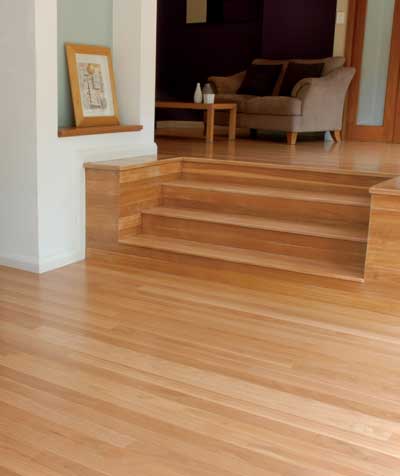
Should you use hardwood flooring in a kitchen?
Hardwood kitchens blend into the flooring of the rest of the home giving a continuity to your spaces. Open plan houses are great examples of how a kitchen might require the same type of flooring as a living area. It is however, important to be aware of the fact that kitchens are usually the area within the house that flooring takes the biggest beating. Spills of various substances as well as dropped items (that can be sharp!) mean that your hardwood floor in the kitchen will require a little closer attention in terms of maintenance than the rest of your floor. You’ll need to check every 2 to 4 months that wear isn’t ahead of the rest of your floor, and if it is you will need to reapply your chosen sealant to the affected area so that your kitchen doesn’t wear faster than the rest of your home. It’s also worthwhile to do what you can to avoid the breakage of dishwashers or any appliances that might leak a lot of water onto your floor. This is not usually something that can be easily controlled, so like any appliance, a sensible maintenance plan is recommended.
If you stay on top of this maintenance regime with your kitchen floor and avoid any major damage, you will have few issues. If however the floor in any one area gets severely damaged, it’s recommended that you have a professional sand back and refinish the floor.
Should you use hardwood flooring in a bathroom?
Hardwood flooring is an acceptable product to use in bathrooms, however it requires an excellent quality sealant as well as some vigilance for potential maintenance requirements. There are also several factors that you need to consider to make sure that your hardwood floor will not become damaged by the conditions in your bathroom.
Hardwood floors will take on moisture if it is present in the atmosphere, and bathrooms are usually the most humid places in most homes. If you are going to have a hardwood floor in your bathroom it’s recommended that you have a good exhaust system to remove humid air when you shower/bath. It’s also a very good idea to do what you can to remove the possibility of showers leaking out onto your floor. A shower door or a barrier of any sort will prevent spillage onto your floor. In the areas that you use to dry yourself after washing it’s a good idea to always use a bathmat, and to make sure that you hang it once you’ve used it. This way there won’t be any stagnant water seeping into your flooring. You should also try and make sure that you don’t have any fixtures such as a shower extension directly over your floor. They will likely drip onto your floor and damage it over time. Lastly, you will need to be careful with the cleaning products you use on your bath, shower and toilet. Bleaches and harsh chemicals will damage your hardwood flooring and also destroy the sealant.
It’s very important that bathroom hardwood floors are installed professionally. This is because you need to make sure that your hardwood bathroom floor is absolutely level, as any inconsistencies will likely result in water pooling in certain parts of the floor, which is a recipe for trouble. It’s also recommended that you use an adhesive to stick the boards to their joists so that there are no screw or nail holes through any of the timber. This will allow you to get a far more effective seal on your floor and better ensure its protection.
Moisture Content and movement of Hardwood floors.
Once delivered, hardwood flooring products need to be carefully kept in a dry environment with adequate ventilation so that they aren’t subject to any movement before laying. It’s important to take great care of your floorboards before they are installed, as any poor treatment of them at this stage can have consequences with regards to their stability and performance later.
Hardwood floorboards are typically supplied at 10-12% moisture content, In Australia, the atmosphere in coastal areas averages between 9-14% moisture, and in the drier parts of the country 7-12% Because of these fluctuations in moisture, it’s sensible to acclimatise your hardwood timber floorboards before they are installed. It’s best to stack them with adequate support to allow airflow and let the boards moisture content stabilise.
If your home or the area that you are looking to cover with a hardwood floor is in a humid environment, your installer will need to assess the relative humidity of your area and make adjustments to the floor to allow for greater expansion of the boards due to the increase in moisture in the air.
Hardwood floors also require a dry sub floor. Your sub floor must have good ventilation and be at least 150mm deep in the space up to 2m from the wall. Further to this 400mm space is required between the sub floor and the floorboards. Sub floor ventilation is important in reducing the effect that humidity has on floorboards. In extreme cases it may be worth sealing the underside of floorboards to protect against degradation. An open sub floor can also cause issues in that your floor may be exposed to too much weathering and be subject to problems due to the wind/rain or moisture attacking it from below.
I hope that this post has reasonably covered what you need to think about if you’re considering hardwood flooring. If you’d like a quote on our outstanding quality range of Boral hardwood flooring please get in touch. Thanks for reading

